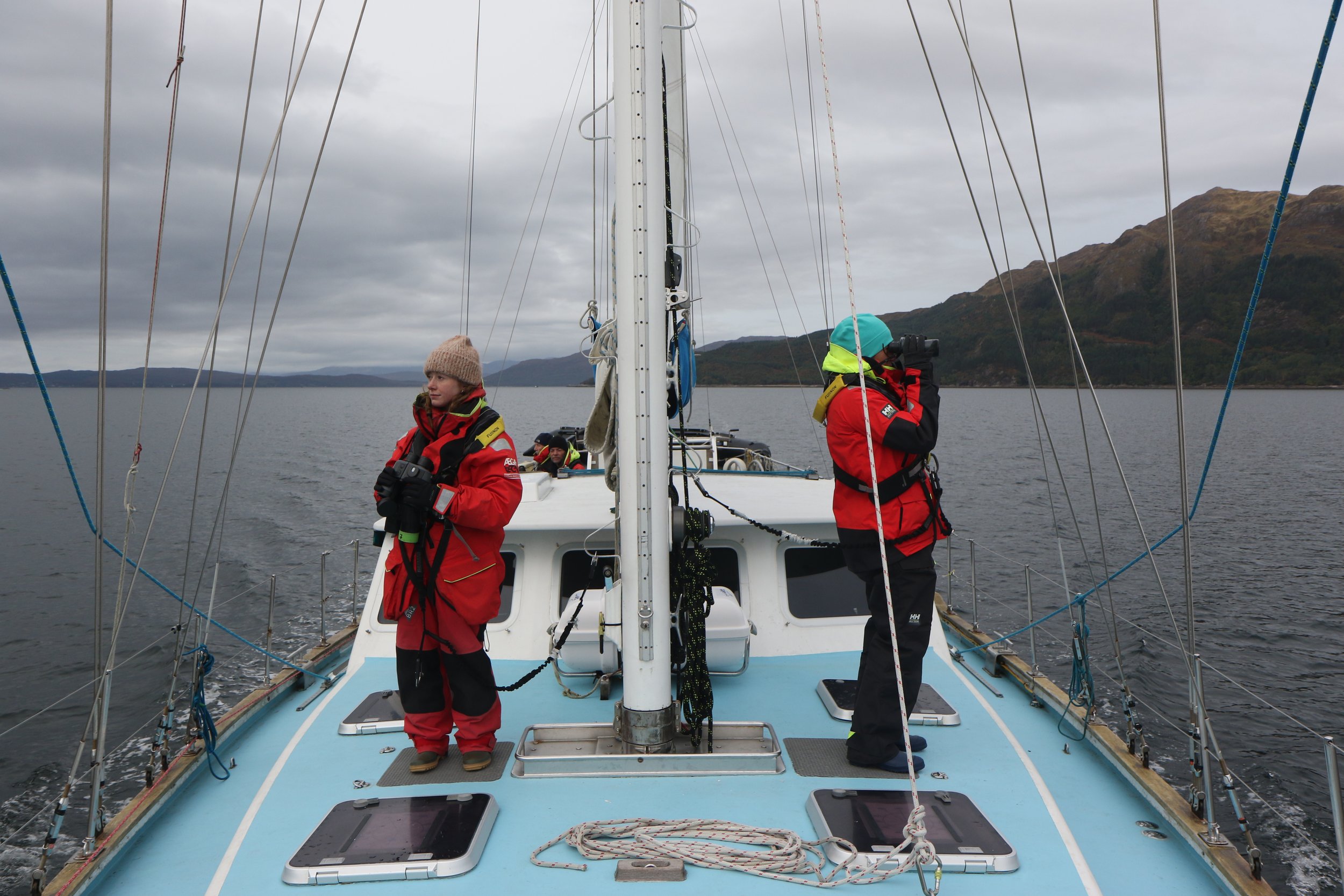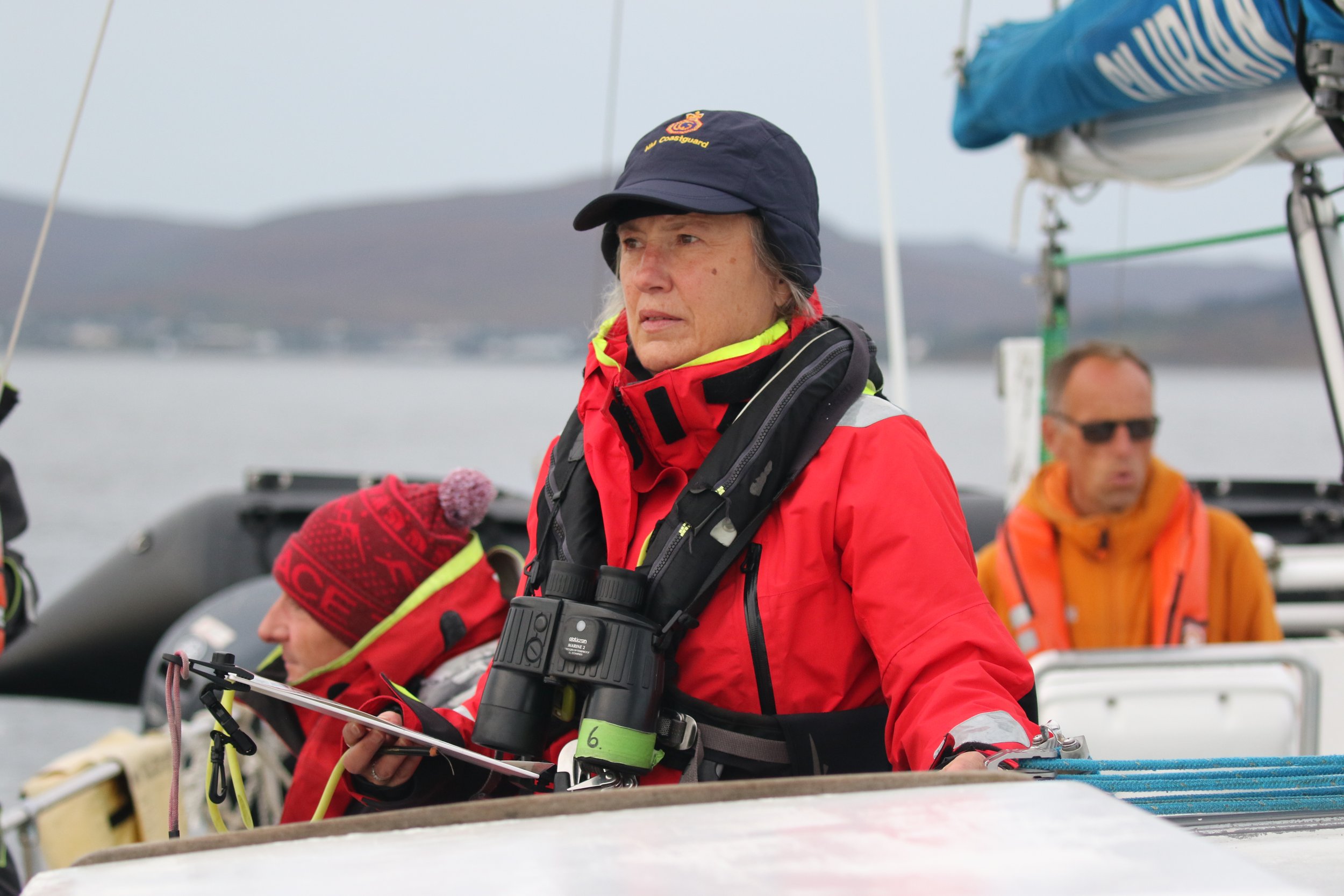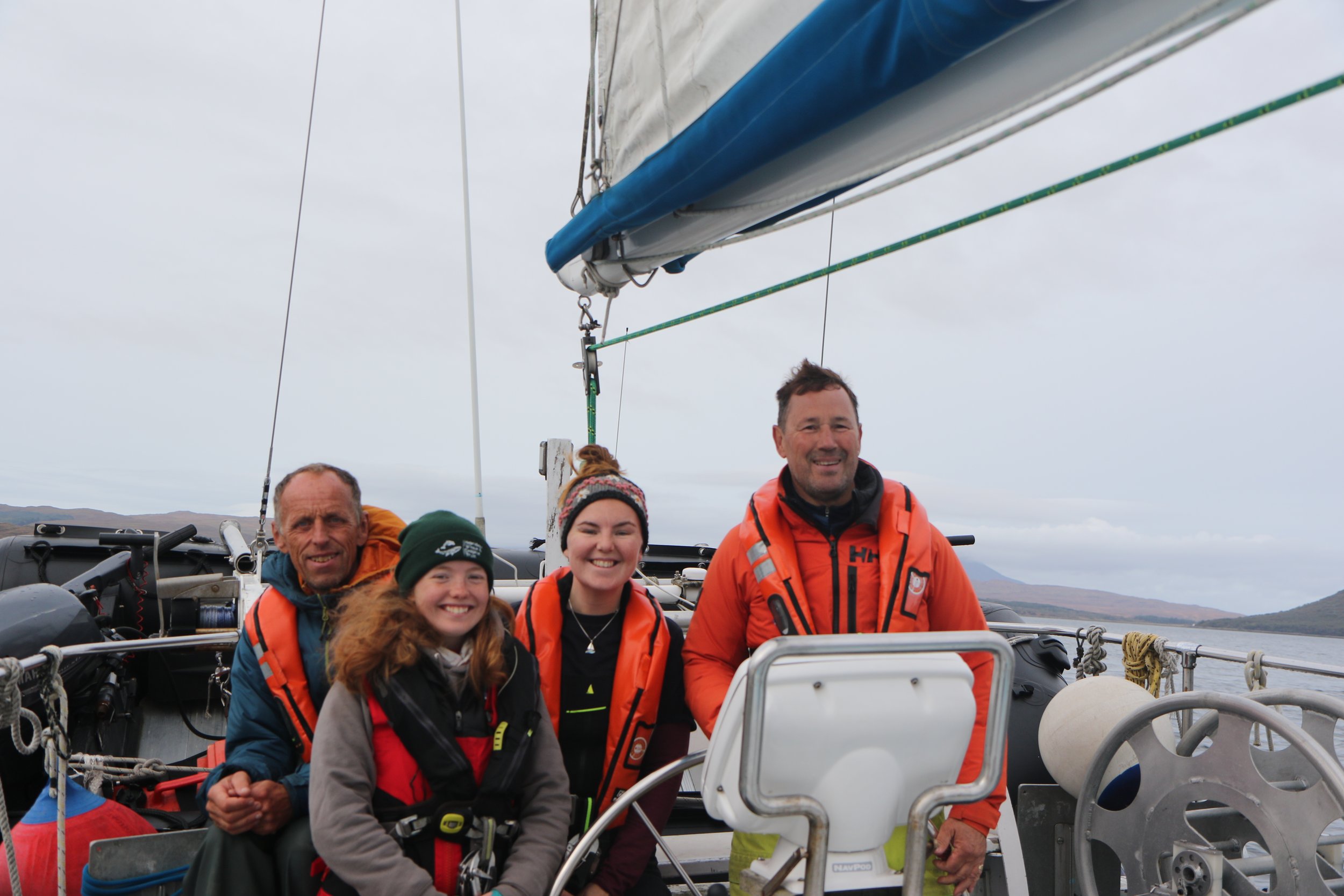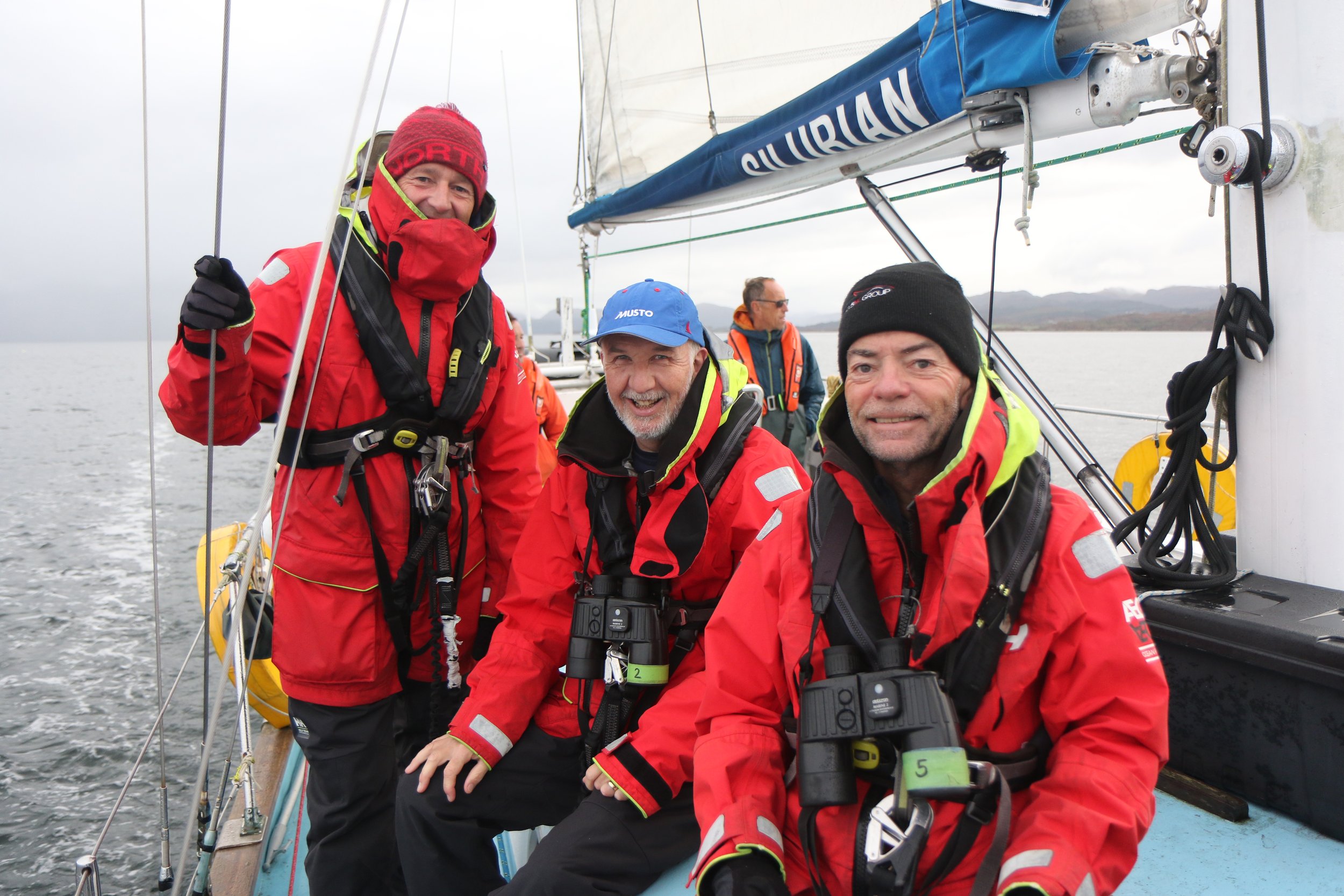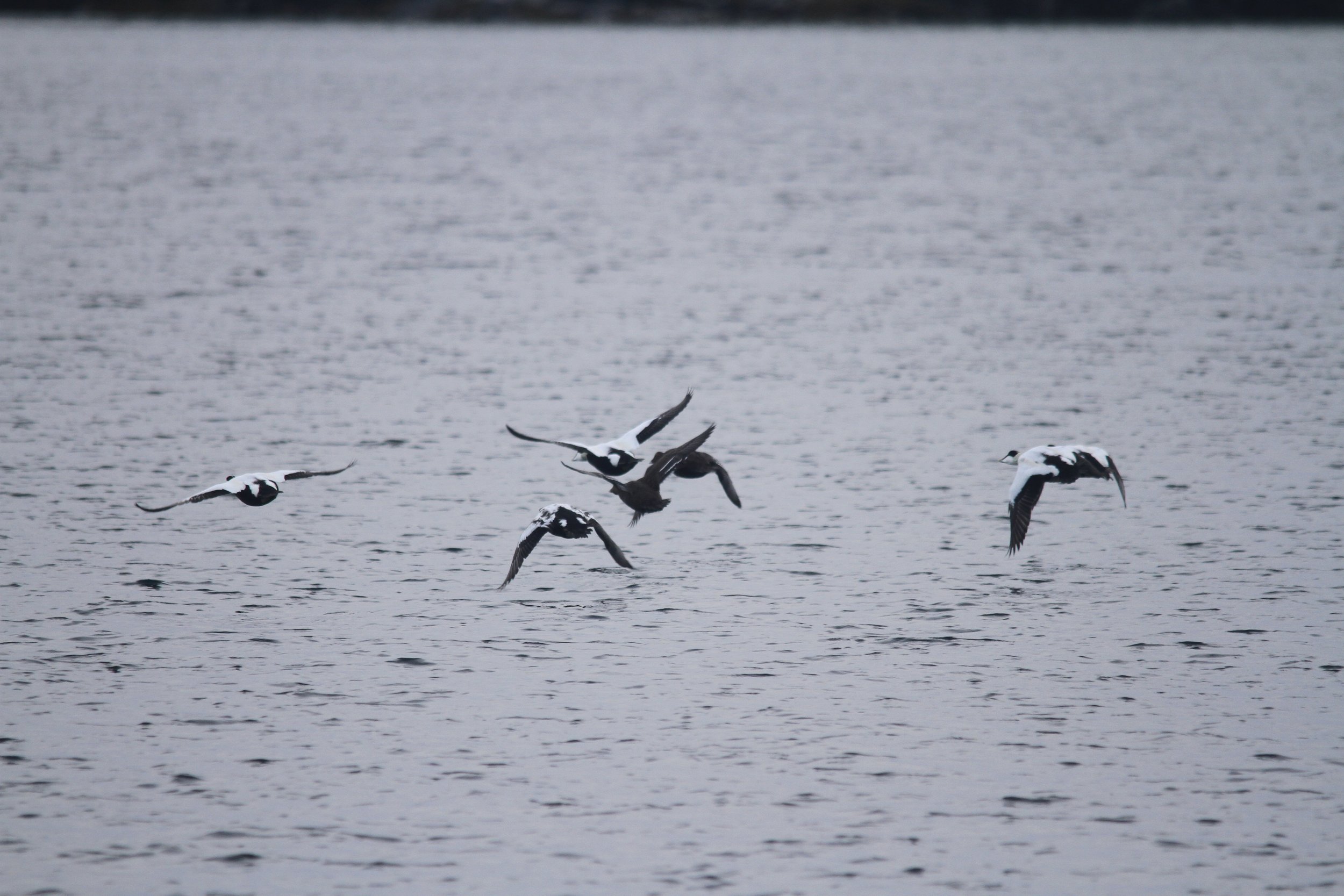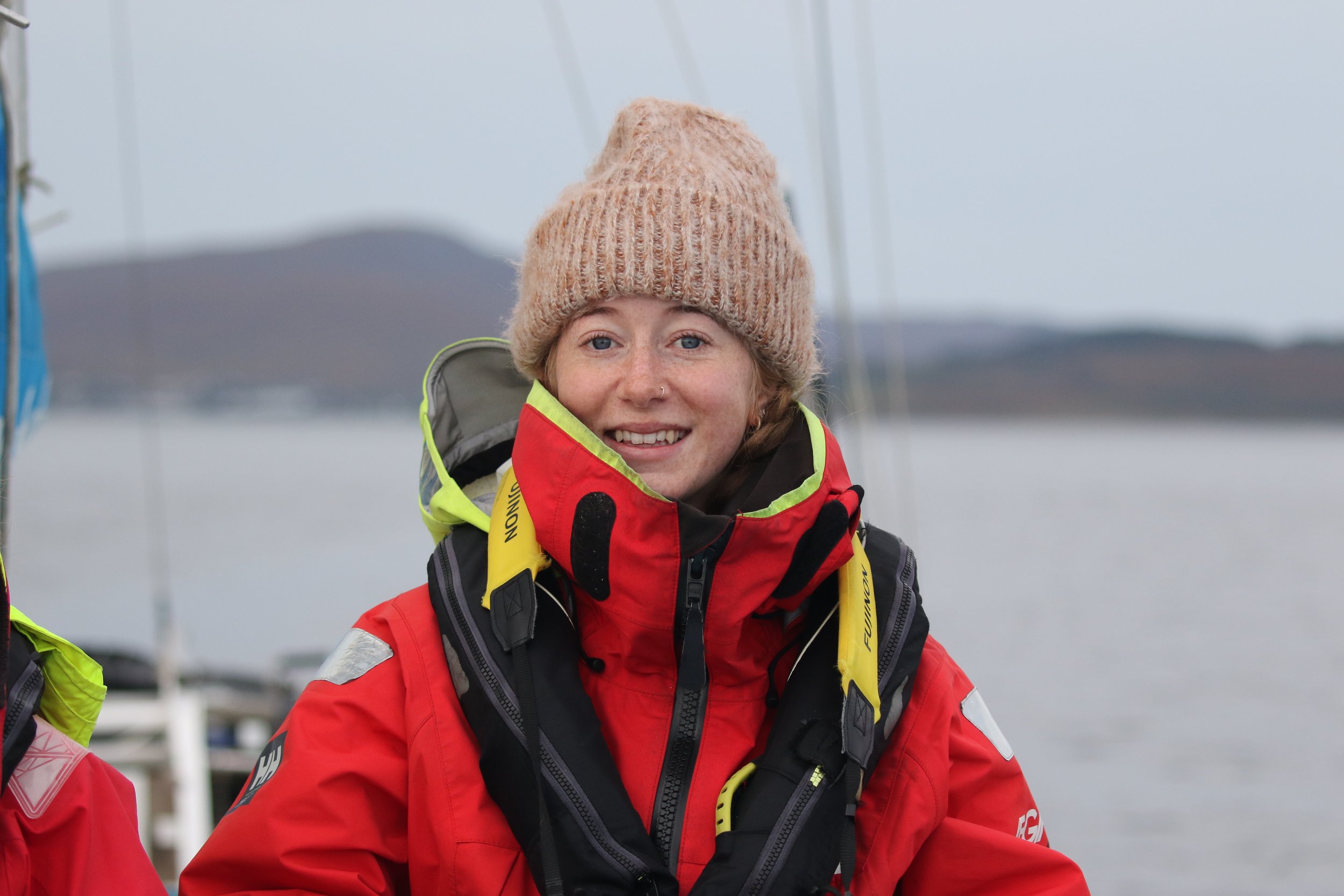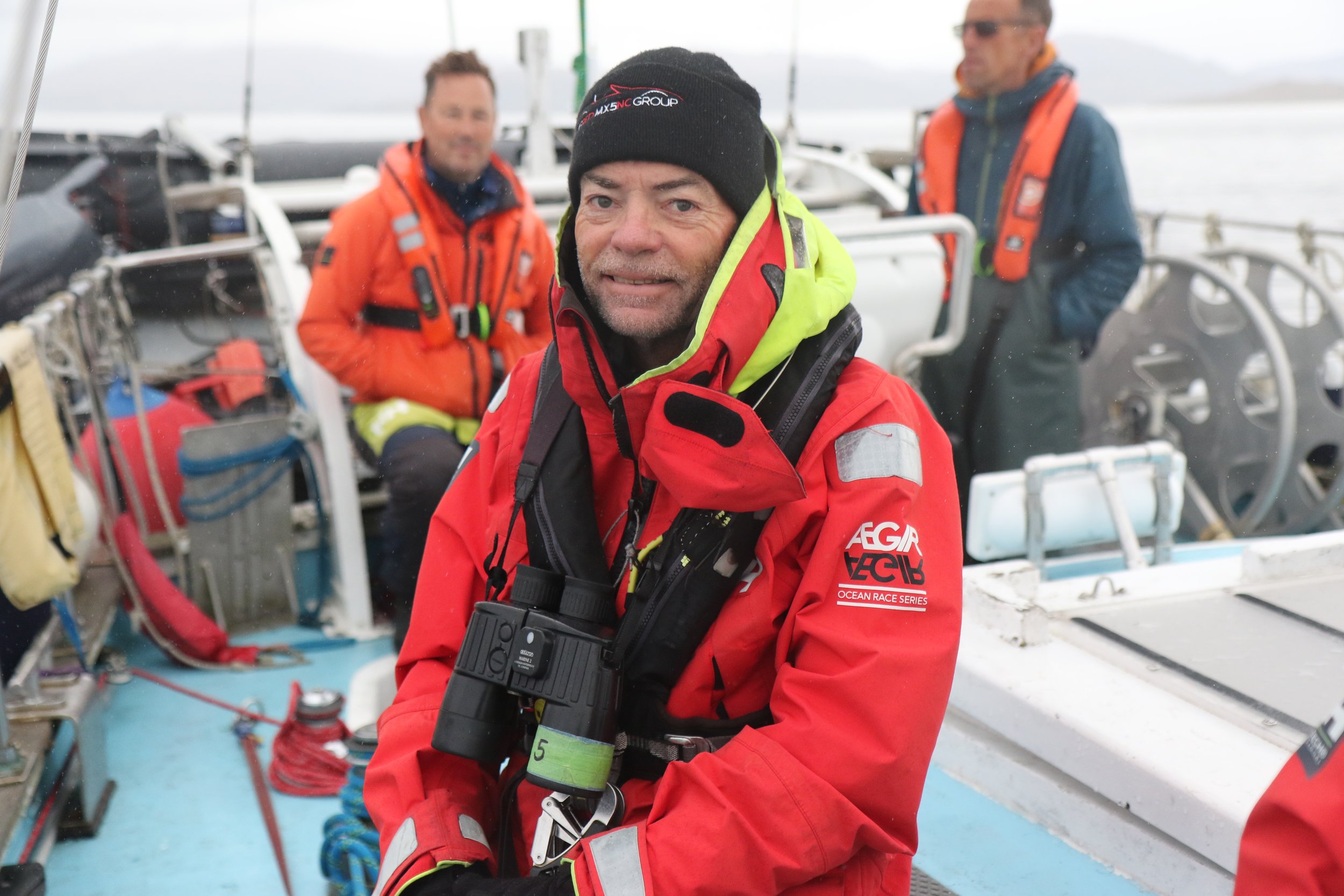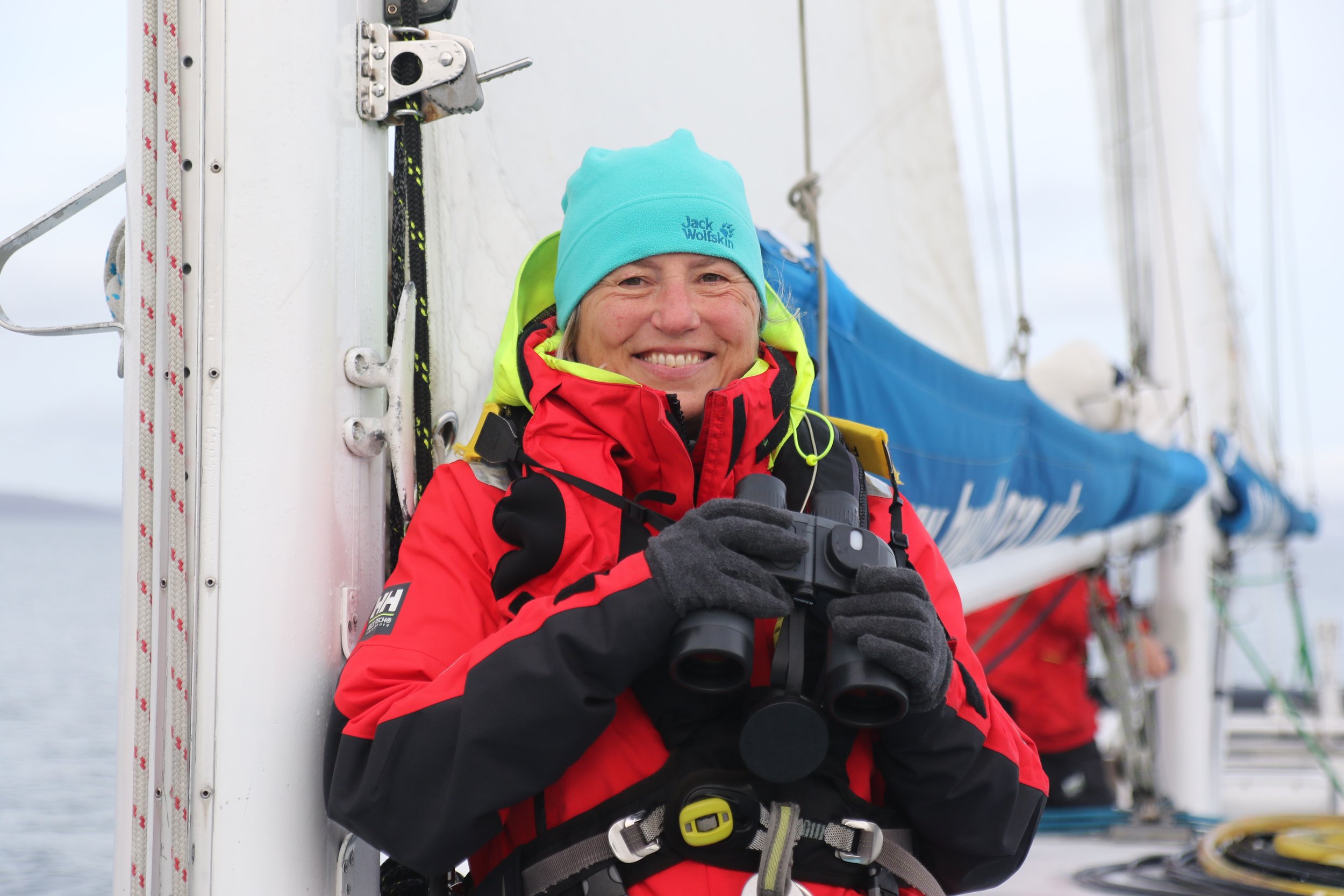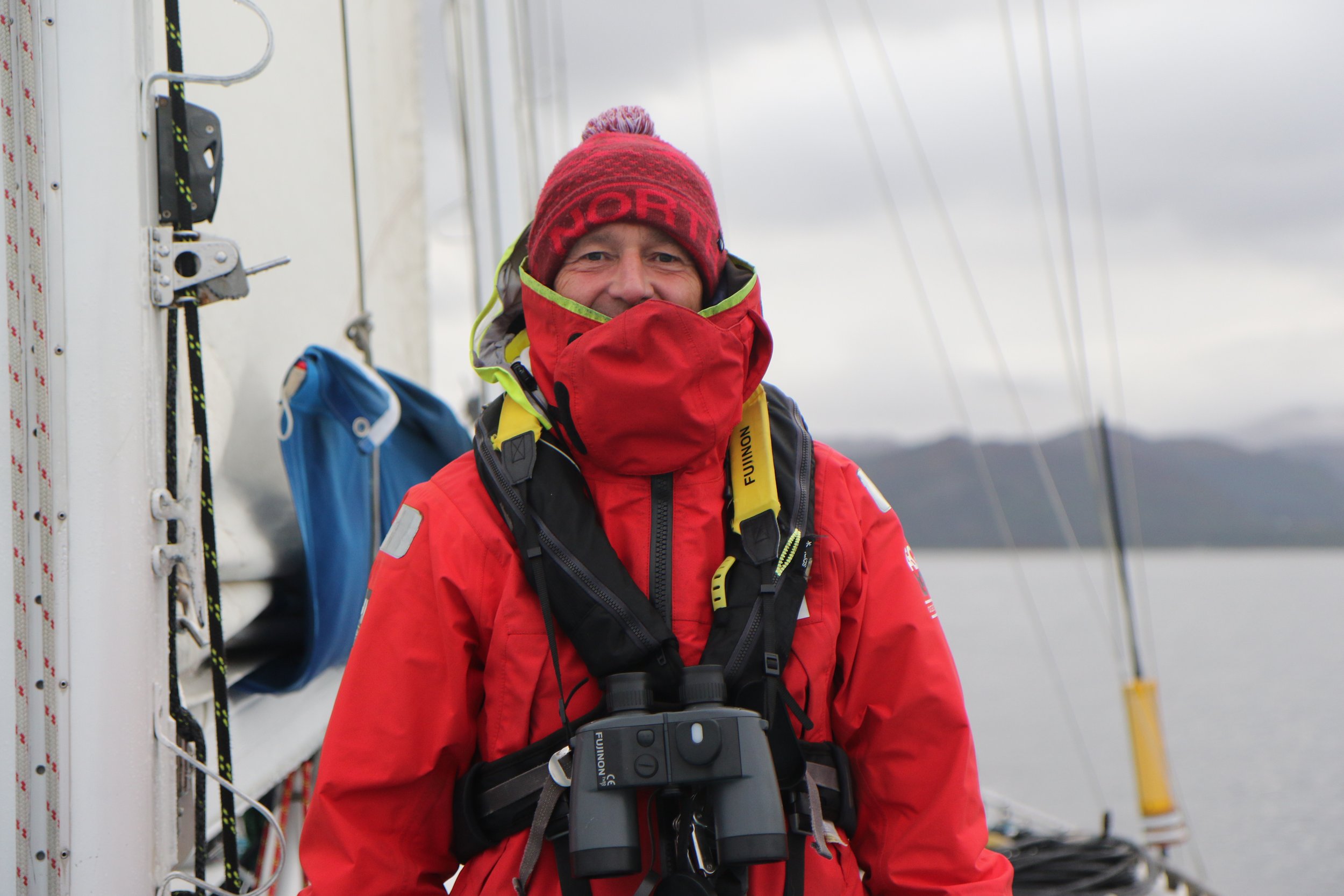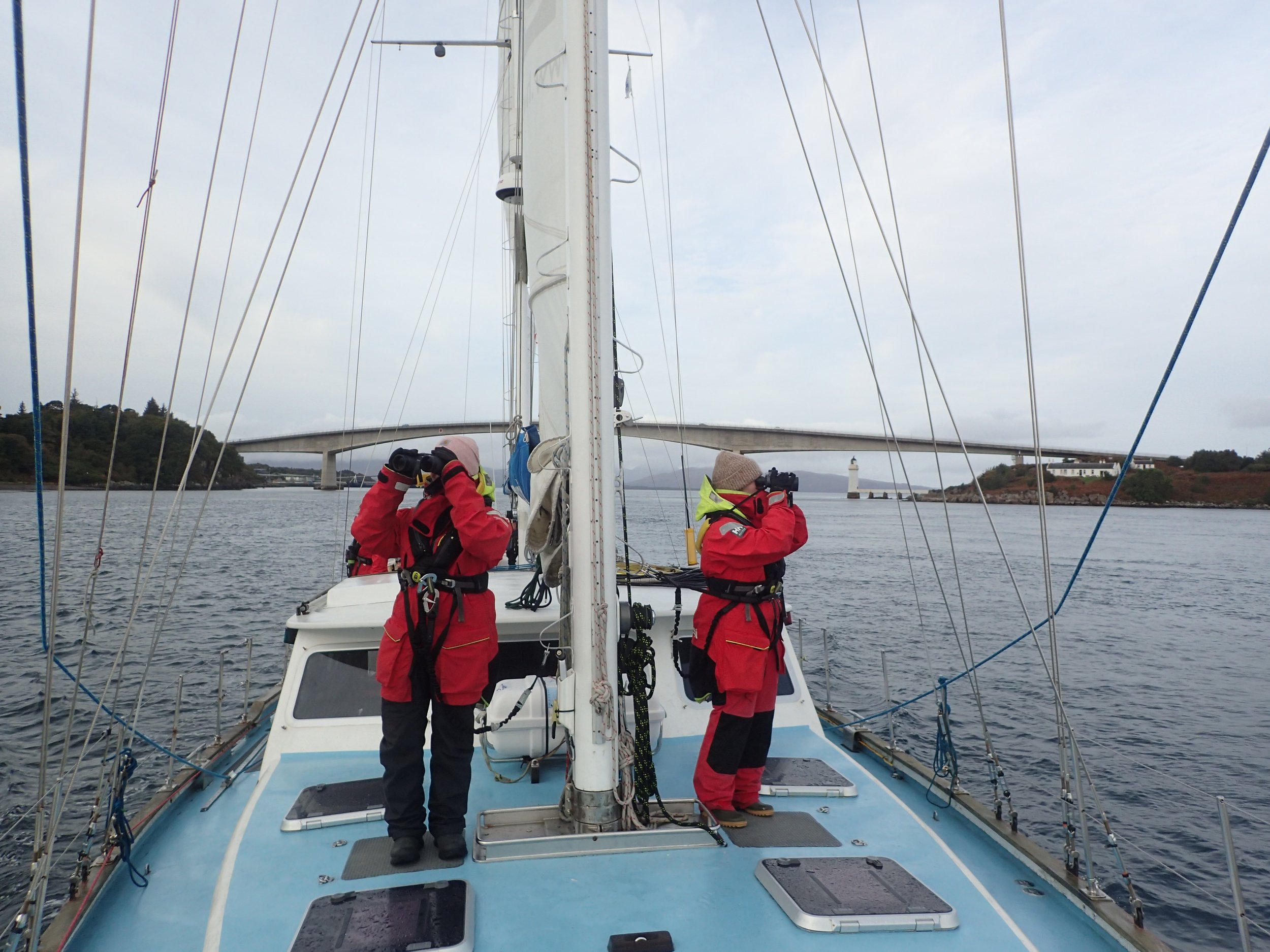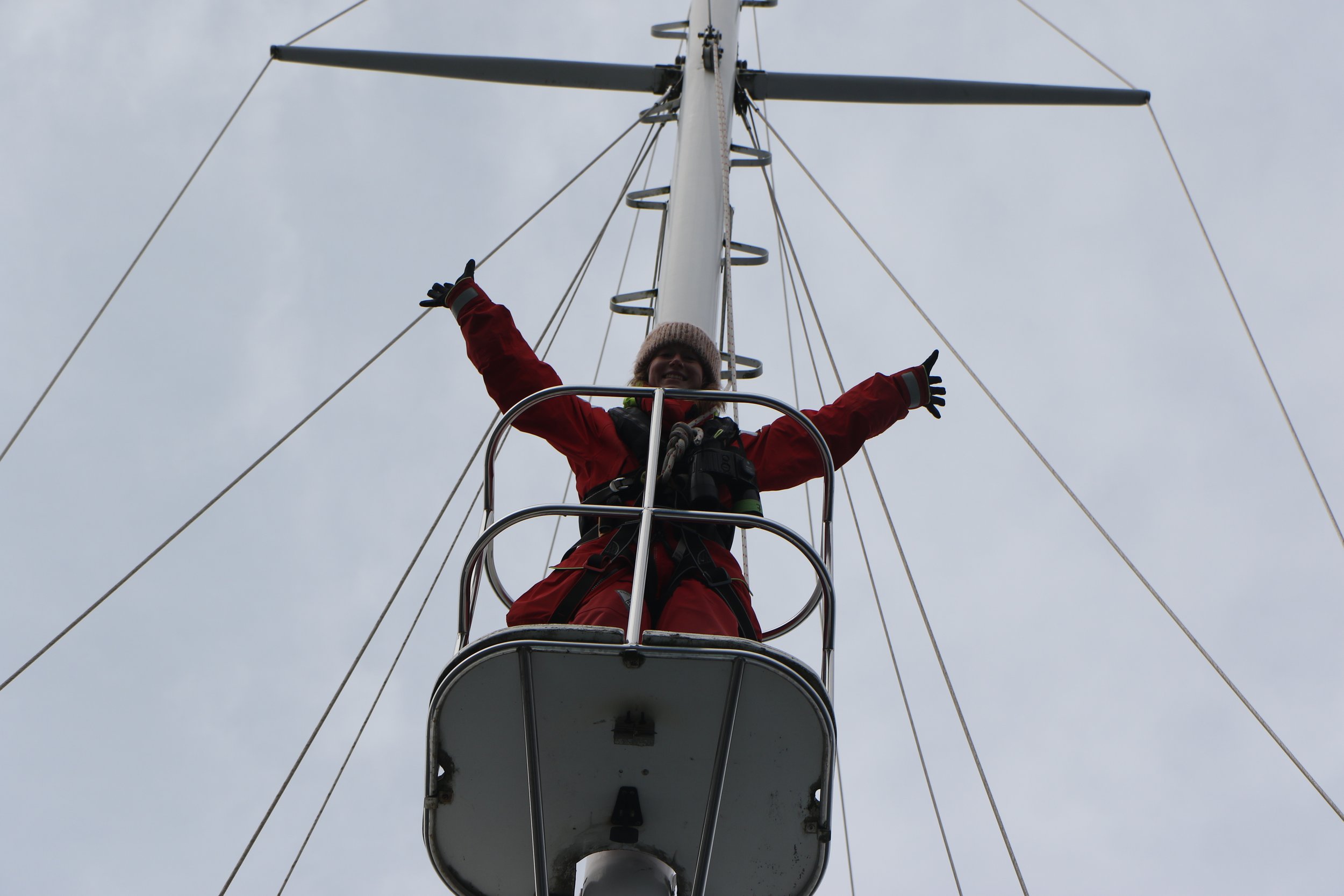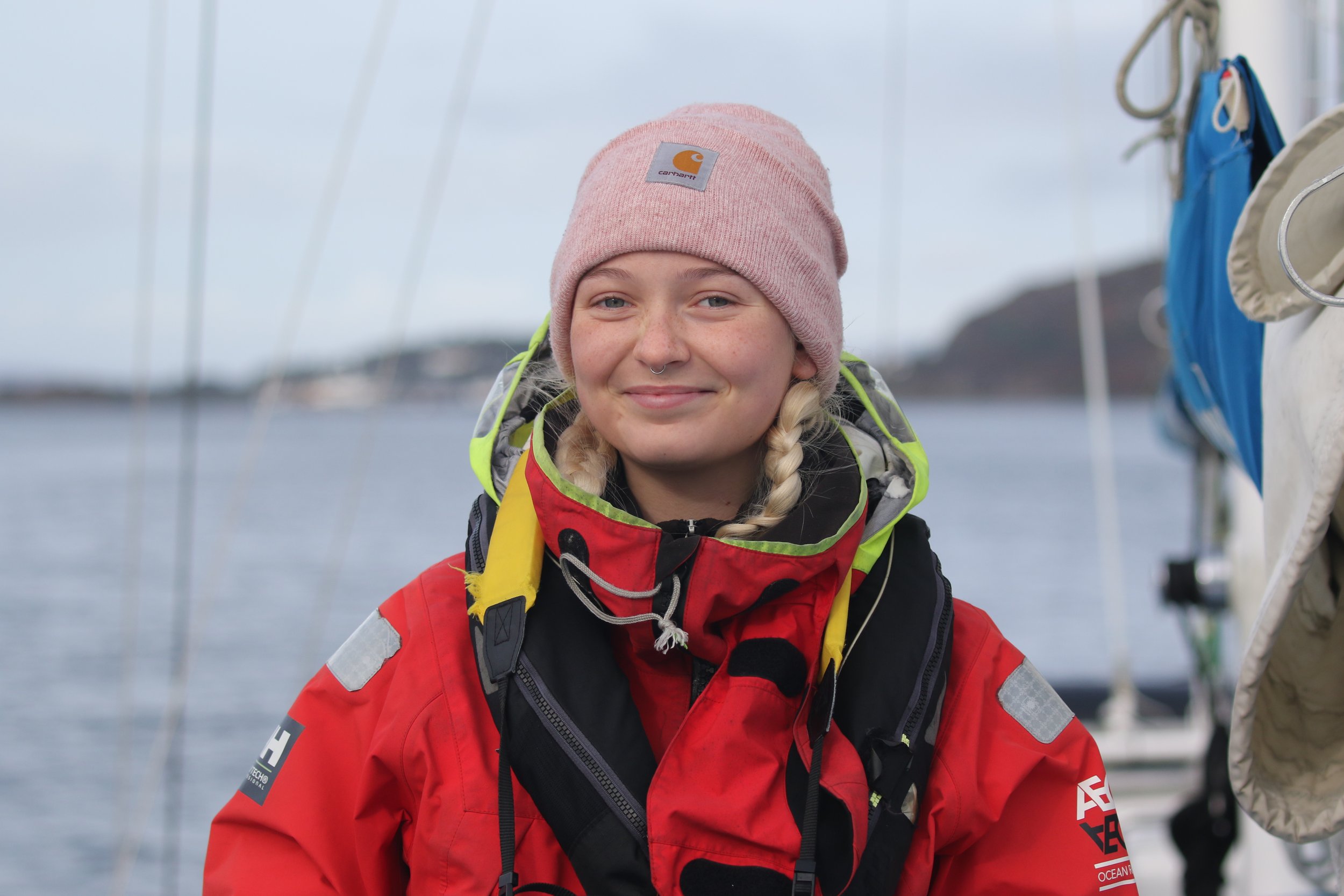Whaley wet weather for the fifteenth research expedition!
The team on board our fifteenth research expedition of 2023 left Mallaig and monitored the waters east of the Isle of Skye. Despite challenging weather conditions, the intrepid citizen scientists on board encountered six species of marine mammal, across 86 encounters.
DAY 1 + DAY 2
A new team of volunteers comprised of Stuart, Amy, Julian, Liz, Lara ad Roy arrived at 6pm sharp to meet the crew of the Silurian; Brian (Skipper), Bruce (First Mate), Hannah (Science Officer) and May (Fourth Crew). After a lovely introduction to the vessel and the crew, everyone sat down for a fabulous veggie spaghetti bolognaise with side salad. Meeting so many new people (already friends!) with a joint adventure ahead helped us to bond almost immediately. A tot or two of whisky helped.
Having received excellent and comprehensive instructions on cetacean identification (who knew there were so many?) and the safety requirements on board, we felt confident that we could play our part in the vital research undertaken by HWDT.
Our first day at sea started at noon after a morning of education and a delicious breakfast including homemade porridge as well as toast, fruit, etc. Heading out of Mallaig with the rain clouds gathering, we were fully prepared in our very practical waterproof gear. And then it rained and the winds strengthened and the boat rolled… However, no one was ill and we cracked on with the survey with smiles all around; which may have been grimaced occasionally as yet another shower whipped into our faces. Heading north through Kyle of Rhea, towards the Skye Bridge, the sun appeared somewhat unexpectedly and so did some harbour porpoises to be followed swiftly by a few grey seals and then, courtesy of a fantastic spot by Amy, we saw our first common dolphins of the trip which were also picked up on the hydrophone (more about this on another day) by Hannah.
Now for dinner and a glass of something…
DAY 3
We awoke to calm seas and after enjoying excellent porridge for breakfast, headed out for a full day of survey. The first few hours were spent enjoying fabulous panoramic scenery, as we sailed through the Sound of Raasay towards Rona. After logging many creel sets and the odd seal, we were all thrilled to see several harbour porpoises and, then Hannah sighted our first whale of the day - identified as a minke. We then went “with whale” and made several more sightings. Bruce then treated the team to well-received bacon sandwiches after which we steamed ahead around Rona.
The highlight of the day was spotting several common dolphins that headed towards Silurian and then, after being joined by at least 100 other friends, spent a good half an hour playing on our bow. It was a truly amazing sight. Back “on effort”, Lara then sighted another minke and we then went “with whale” for the second time. After a few minutes, we were awarded with a close-up view of the whale which swam alongside the boat, even performing a blow through its blow hole for good measure!
With a storm heading towards us, we then headed for the sheltered waters of Upper Loch Torridon, the volunteers on the mast having an interesting time with heavy seas and rain. By mid-afternoon conditions deteriorated and the volunteers were stood down from duty as sighting had become impossible. Once inside, we soon dried out, ready to enjoy another evening dinner and chat.
DAY 4
After the excitement of yesterday’s sightings and following a stormy evening on anchor in the middle of upper Loch Torridon, we awoke to another windy day and the decision was made to stay at anchor for the day as the weather conditions in the Minch were still stormy. Hannah devised an itinerary for a ‘Whaley Wet Day’, where we started off by each undertaking our own research projects and presenting them back to the team. We then had a guest lecture from Conor Ryan on the history of Scottish Whaling, which proved to be very interesting, albeit upsetting due to the number of whales that had been killed up until the 1950’s, however, the presentation ended on a positive note, focussing on the conditions in the west of Scotland for cetacean species growth.
After a busy morning of learning, a break in the weather allowed us to head to the deck for some fresh air and wildlife spotting. Species that we observed whilst at anchor included diving gannets, eider ducks, shags/cormorants, common seals, and tysties (black guillemots).
The afternoon started with a talk from our skipper, Brian Morrison, where he talked about his travels in the South Atlantic on a search for Southern right whales, and his trips off the coast of the United States looking for the Northern right whale. This was accompanied by some fantastic photographs of his journeys and the spectacles he was lucky enough to observe.
The afternoon finished with a delicious homemade citrus drizzle cake and a quiz devised by Hannah, testing our knowledge on the HWDT, all things Hebridean, and finishing with a sea-based music round.
DAY 5
After a slower start we set sail, with the plan being to leave Loch Torridon and begin our survey. A few creel sightings later, the stormy weather got in our way yet again, so the decision was made to shield in Shieldaig for the foreseeable. We anchored by a small island which protected us sufficiently, which was also white-tailed eagle territory! We were all lucky enough to see two individuals in the treetops, before returning to the saloon and bundling up for a Hydrophone Acoustic quiz and David Attenborough’s “Wild Isles”.
After a warm and delicious soup for lunch, Brian decided it was safe enough on the water to leave our refuge and head for Plockton. The survey resumed with renewed energy and full bellies, however, as we sailed into the Minch, the sea swell reached 2m (AKA super rough), and the wind picked up furiously, so the survey was paused yet again. A few of us decided to remain on deck and revel in the rollercoaster that carried us into the Inner Sound. With rolling waves and whipping winds, we made the most of a less-than-ideal situation! Hannah kept the hydrophone submerged, so we were able to gather acoustic data and only lost a few hours of visual data.
Once we reached the Inner Sound, the waters and skies alike calmed down, and we could get back to visually surveying the sea. During this last section of the afternoon, we had three separate sightings! The first was a possible baby dolphin or harbour porpoise, the second a likely lone common dolphin, and the third, a pod of five harbour porpoise. Closing off the day was a gorgeous orange sunset and still waters all around, not to forget a Haggis dinner, safe in Plockton!
DAY 6
We awoke in Plockton to a flat, calm sea where we had our final ch-ch-ch-chart chat of the week. We set sail and made steady progress under the Skye bridge and on towards Mallaig, marvelling in the calm conditions, of which we had become very unfamiliar with on this trip! Throughout our journey we spotted what felt like a never-ending reel of creels, plenty of seals, both common and grey, harbour porpoise and otters. Seeing as the weather was in our favour, four of the brave volunteers took turns climbing up the mast to the crow’s nest, 25 feet above deck level, to take in the breath-taking and clear views of Loch Hourn. On our way out of the Loch we enjoyed a delicious pea and butternut squash risotto on the go, and we were soon to be welcomed by a minke whale for a brief encounter.
We arrived back in Mallaig harbour in the mid-afternoon, ready for an evening of food and live music in the local pub- but only after a hot shower for everyone on board! All in all, the week has been absolutely exhilarating, despite the ever-changing and challenging weather conditions, and the trip has ended on spirits as high as they were as we set sail 6 days ago.
Across 7 days, the group surveyed 150 miles of Hebridean waters encountering 6 species of marine mammal across 86 sightings.



